By Joe Gresh
It’s March in central Florida, cool and clear. I get the call from Ed in the late afternoon. A couple of his California friends are racing motorcycles in the 600cc class. He wants me to help them out. The sun is setting low over Lake Schimmerhorn, the sky a blood-orange deepening to cobalt blue high overhead. White, high-persistence contrails cross the sky in an Atlanta-Orlando direction. The scene outside the Love Shack looks like a flag from The Republic of Kodachrome. “Yeah” I say, gently pulling the wrapper of a grape Jolly Rancher. The candy rotates clockwise between my fingers. “I’ll go.”
“Cool, you met Jeff and Beaver at the retirement party held after the anniversary party,” Ed said. “Remember Torrance?” In the background I hear a machine scraping metal: another of Ed’s big-block Moto-Guzzis. The man can’t leave motorcycles alone.
“Torrance? Yeah, I remember, my wife said Jeff seemed kind of depressed. Happily married, good corporate job; didn’t he give up racing?”
“He did, then he didn’t,” said Ed. “Look for the Baby Appleseed pits. Get there early tomorrow, I told them you’re coming.”
It’s 38 degrees in the morning. My Italian-era Husqvarna 510 stumbles and stalls, then lights off on the fourth push of the button. I rev the engine and slip the clutch on the Husky’s tall first gear. A sloppy, brapp-brapp snarls out of the pipe and ricochets from aluminum singlewide trailers to sway-backed modular homes. I turn right onto Highway 40. Open the throttle and the Husky’s tachometer rips past 9000 rpm, front wheel climbing on the surge. Two, three, four, five, six, shift as fast as you can, man.
I’ve got to keep the front down. It’s dark. Highway 40 is damp with morning dew. The headlamp flickers intermittently between low beam and parking light, low beam and parking light. It’s a random problem and one I can’t solve. Oncoming cars dip their headlights, thinking I’m flashing them. I wish I could stop and explain Italian motorcycle electrical systems but there’s no time. It’s cold. My hands hurt.
At the very end of Pit Row the black, the white and red Baby Appleseed logo is splashed across two huge gazebo tents. I guess with Ed involved I expected one rusty Craftsman toolbox and a mid-eighties Moto-Guzzi Alfresco. I’d find Jeff and Beaver slumped over, gently sobbing. Beaver’s greasy jeans would have holes in both knees.

“What’s the problem, boys?” My confident tone would instantly buck them up. “The bike has a high rpm miss, Gresh, we’ve been trouble shooting the damn thing for days.” I’d get in there and clean the fuel filter, maybe straighten a bent metering needle and the bike would run perfect, you know, save the day.
Baby Appleseed’s pit has two mechanics, electric tire warmers and a second rider, Neils, owner of the high-end baby furniture company sponsoring the team. There’re computers to track lap times, 120 volt AC generators and air compressors.
Both Appleseed motorcycles are decked out in Baby Appleseed racing colors. Back in the dry pits there’s a motorhome with a full-body Baby Appleseed wrap parked in front of a dual-axle Baby Appleseed trailer stocked with Baby Appleseed race parts. The mechanics wear Baby Appleseed logoed race shirts. Jeff has qualified in the front row for race one. To the untrained observer it appears they’re doing ok without me.
“My wife was worried about you.” I tell Jeff, “At that party in Torrance she said you seemed unhappy, settling for security.”
Jeff looks at me, grins, “I’m down to 140 pounds, I’ve been training every day, running. You’ve got to be light to keep up with these kids.”
“She’s sort of an Empath.” I explain, “Like Deanna Troy on Star Trek. When I told her you were racing again she got a little teary-eyed.” Jeff nods, unsure of the protocol. I better close it out. “Anyway, people tell her everything, man. I mean, people she’s never met spill their life story within two minutes.”
“Um,” Jeff says, “Tell her I’m ok. Tell her I’m happy.”
We’re watching the race feed one of the pit monitors. Jeff’s dicing for the lead, the crew is wound up tight. Two laps in, the front tire pushes and Jeff wads the Baby Appleseed bike, a hundred mile per hour get-off. Mostly we see a cloud of dust as the bike tumbles through the infield. It’s hard to tell what’s going on with the monitor. There’s Jeff walking away. Collective relief: “That’s all right then, we can fix the bike.” I think that was Neils’ dad.
By the time I get to the dry pits the bodywork on Jeff’s bike is already gone. Every part that sticks out is either broken, bent, or ground off. One mechanic is removing forks, the other removes the mangled sub-frame then goes back to pit row. Neils is still racing. Jeff surveys the damaged bike, “Damn. We don’t need this extra work.” The bike has to be fixed by 7 PM, when the dry pits close. I better help sort things out.
The bike is down to the frame and motor. “Can I do anything to help?”
The mechanic stops wrenching on the triple clamps, thinks three beats. “Uh, yeah, drain the gas from the wrecked tank.” I grab the tank, “What do you want me to put it into?”
The mechanic looks up again, “What?”
I hold the tank up, “The gas. Where you want it?”
He looks around the pits, “ Um, I don’t know, see if you can find an empty can in the trailer.” He goes back to the triple clamps. Jeff is sweeping the work area, picking up small bits of motorcycle. The mechanics dodge around us to work on the bike.
The trailer is locked. I go back to the pits. “Sorry to bug you again, man, the trailer is locked. Do you have a key?” Water runs from a radiator hose into a plastic, 5 gallon bucket.
“The key? It’s locked?” Hands dripping, “Lemme see if it’s in here.” He searches the top tray of his rollaway toolbox. “Damn, it was here.” He scans the pit area, “I don’t know where it went. Listen, I got to get this radiator off.”
I find Neils, still in his leathers. He just pulled in after a solid race, finishing 20-something out of 60 bikes. I ask him if he has a key to the trailer.
“What?” Sweat runs down his face, “Find my dad, I think he has one.” I wander past the trailer. The door is open. Beaver is inside. There’s an assortment of cans.
“Which can should I use to drain the gas from the smashed tank?” I ask.
“What?” Beaver replies, putting down two replacement wheels.
“I need to drain the gas from the old tank.”
“Oh, um…take this one.” Beaver hands me a can.
“You got a funnel?” The other mechanic is back. He’s sliding a new fork leg into new a new set of triple clamps.
“What?” He stops sliding the leg.
“A funnel, to pour the gas into this can.” I hold up the can Beaver gave me.
“Don’t use that can. Use the one under that pile of bodywork. I don’t want it mixed up.” I move a broken plastic tailpiece and there’s a can underneath. The fill opening is one inch wide.
“Man, I hate to bug you, I need a funnel.”
The mechanic stops working on the forks and gives a hunted look around the pit area, “Jeff, find this guy a funnel.”
“Look in that box on the rolling tray.” Jeff says. I find three big, red funnels. I fit the funnel and begin to pour the gas from the bent tank into the can.
“Hey! Put a sock on that funnel!” The first mechanic yells at me, putting down the handle bar he was about to install.
“A sock?” I have no idea what he is talking about. Jeff hands me a cloth filter with a sewn-in elastic edge to stretch over the wide end of the funnel. I fit the filter and pour the gas.
“Watch what you’re doing!” There’s a puddle of gas on the floor. I’m so intent on not missing the funnel mouth I don’t notice that the tank’s internal vent tube is pissing gas. It’s a like a frigging geyser, man. Tipping the tank upright increases the flow, broadcasting a liberal dose of high-octane race fuel around the pit area. Both mechanics drop their tools and run over with rags. They start mopping up the spill.
“We got to clean this up! If the AMA guys see this they’ll freak out, you can’t have pools of gas laying around in here!”
Beaver appears beside me and guides me by the elbow away from the spill. “Can you give me a hand moving the gear from pit row?” We walk out to the Baby Appleseed tents on pit row, a distance of some 300 yards. Beaver hands me two cartons of water, I walk back to the trailer. Next trip Beaver hands me three tires to carry, I take them back to the trailer, then a big stack of sprockets.
There’s one of those folding carts parked at the tents. Beaver hands me the portable generator. The damn thing is heavy. “Can I use that cart?”
“No.” Beaver says, “It’s easier to carry the stuff.” I move gear back and forth from pit row to the trailer. Late in the afternoon I glance over at the pits, Jeff’s bike is rebuilt and has passed tech inspection.
The next day Jeff’s rebuilt bike runs near the front all day long and in a photo finish misses the podium by inches. I call my wife with the results. She’s happy, she tells me Jeff is doing what he’s supposed to be doing. The sky turns blood-orange deepening into cobalt-blue high overhead. The Baby Appleseed team is upbeat, they’ve got an entire racing season ahead of them. I only hope they can do as well when I’m not around.
Do a friend a favor: Click on the popup ads.
Never miss an ExNotes blog:

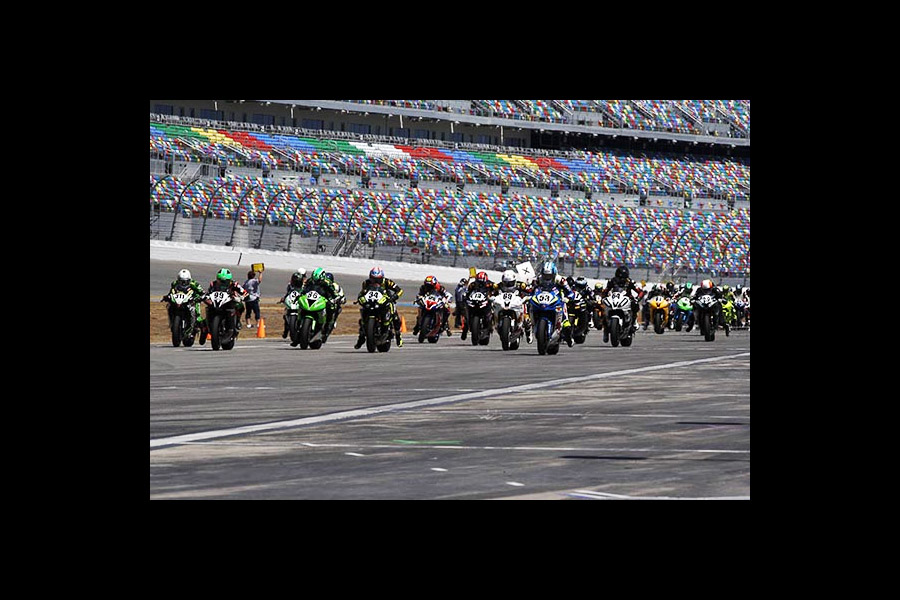
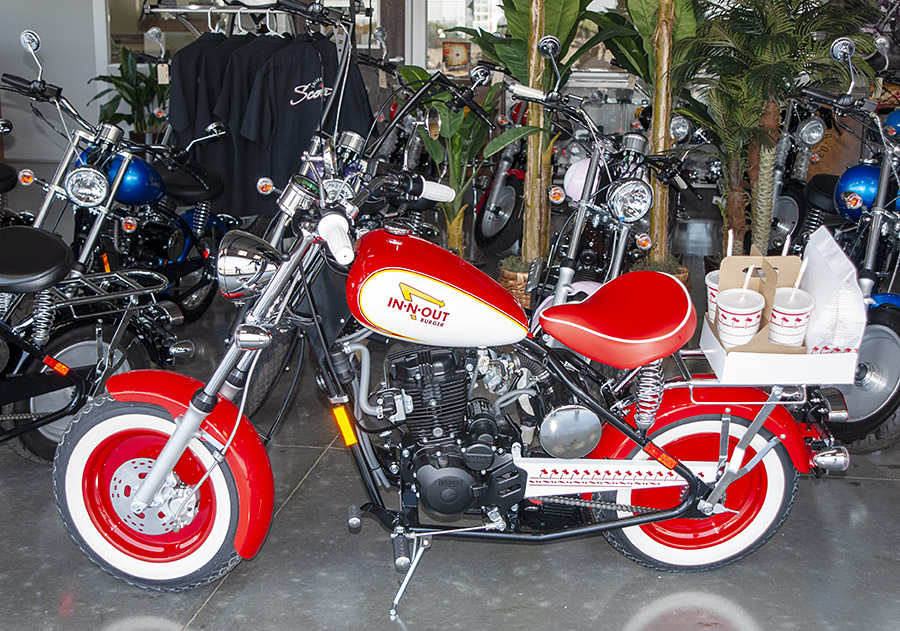
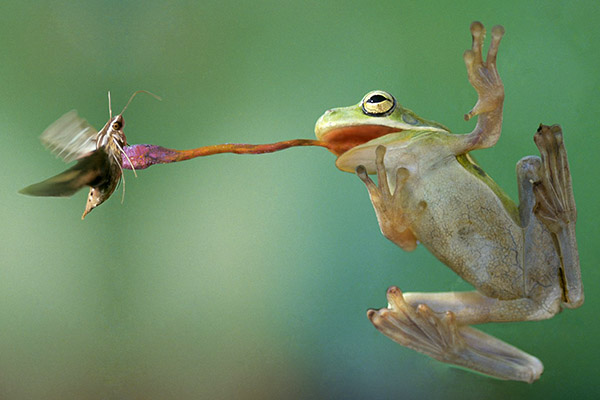
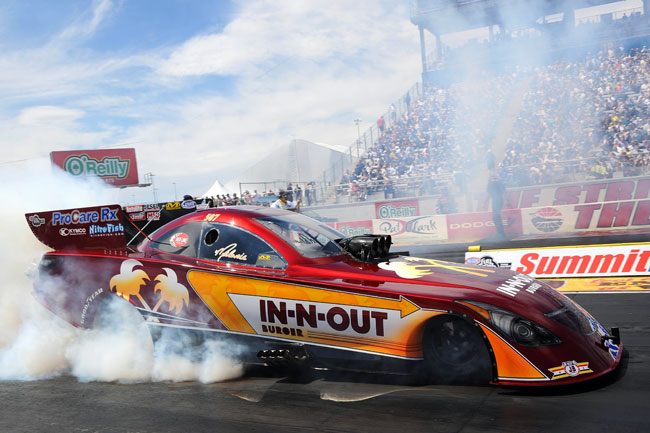
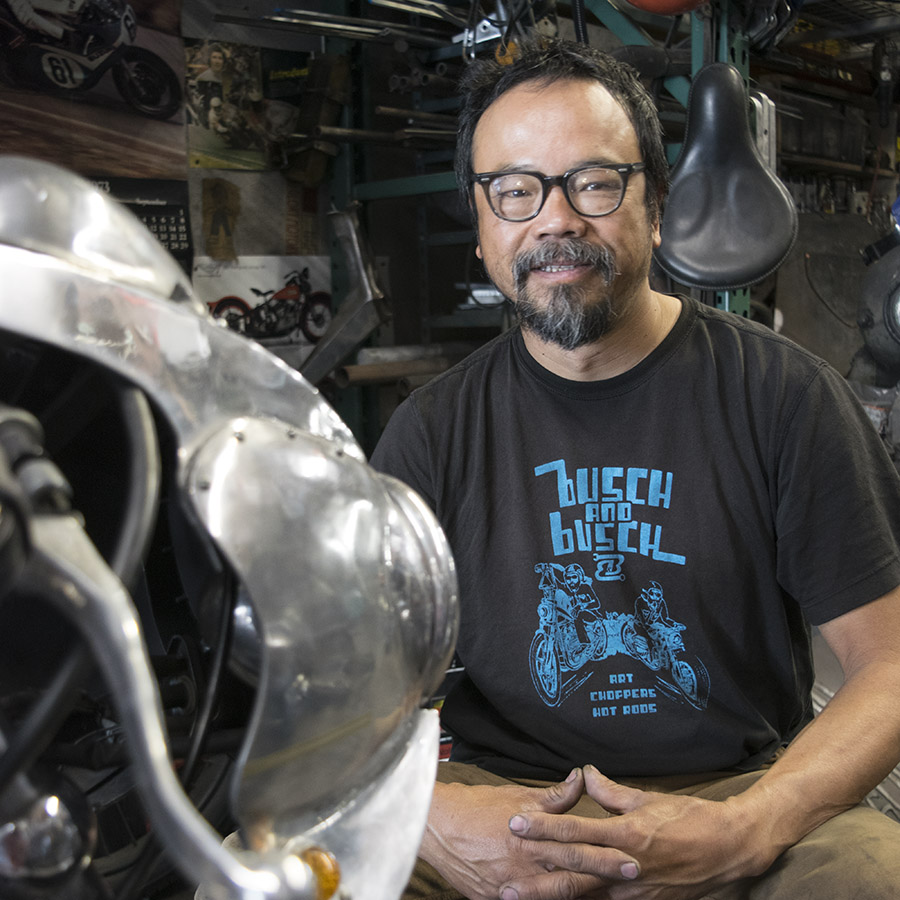
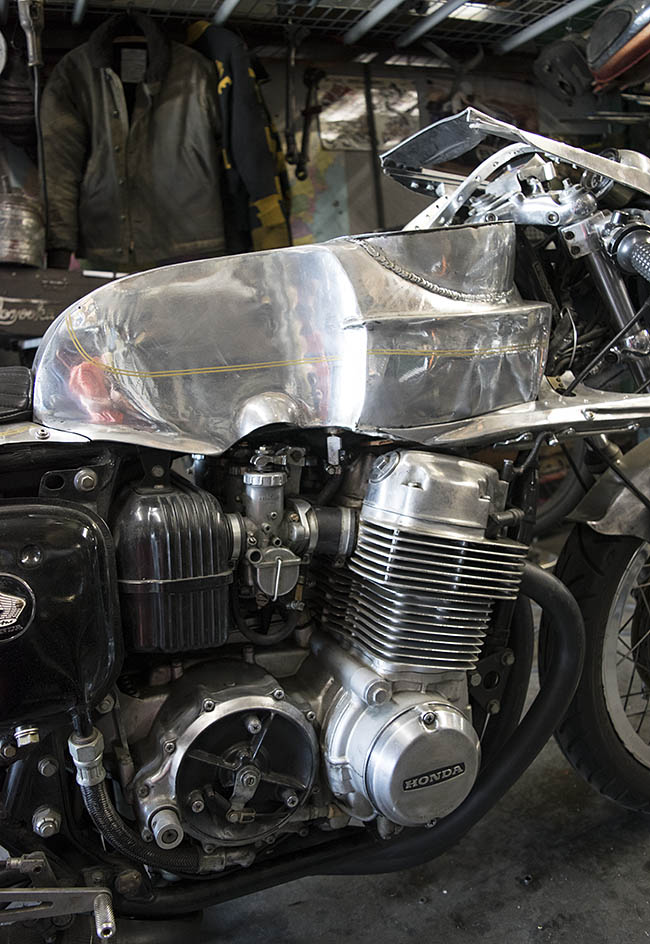
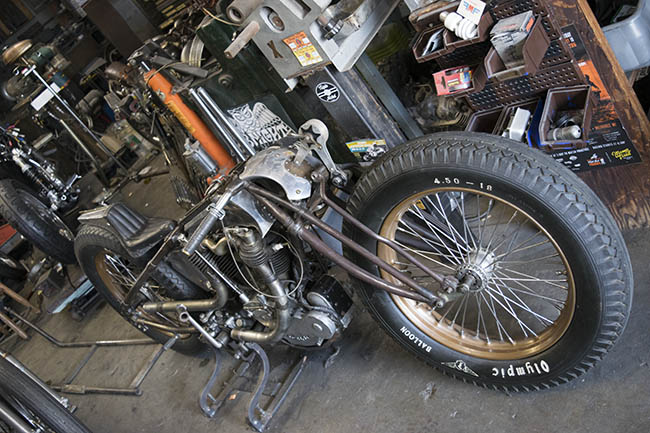
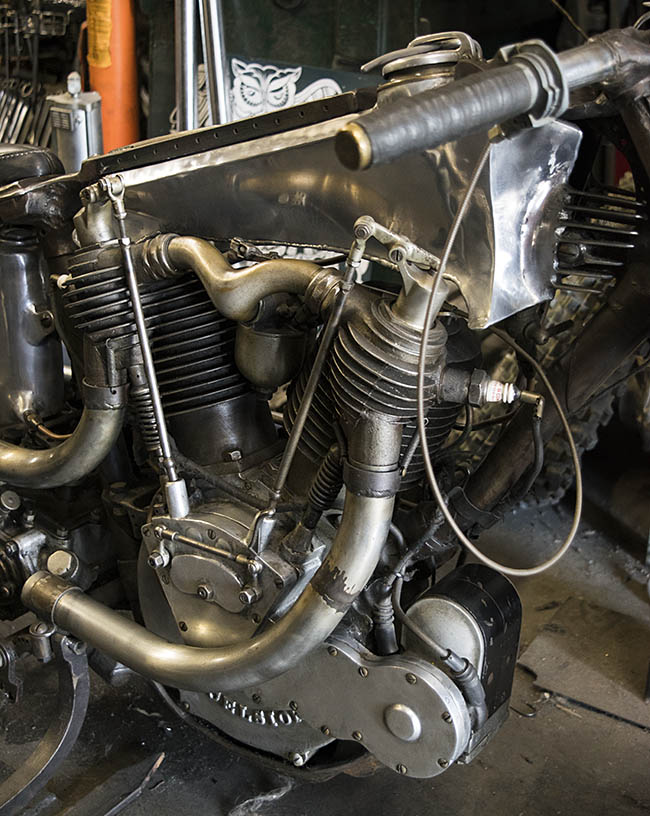
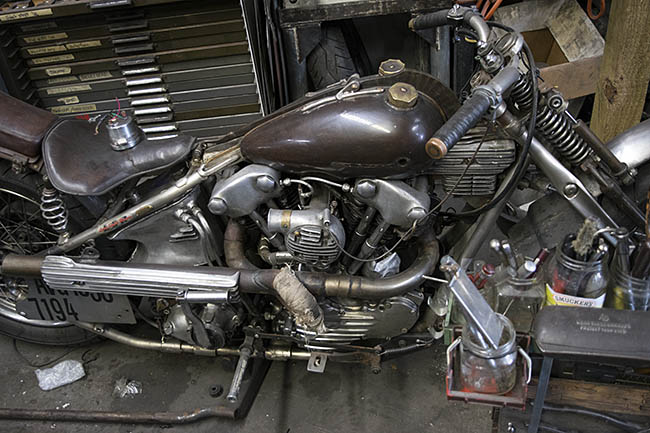


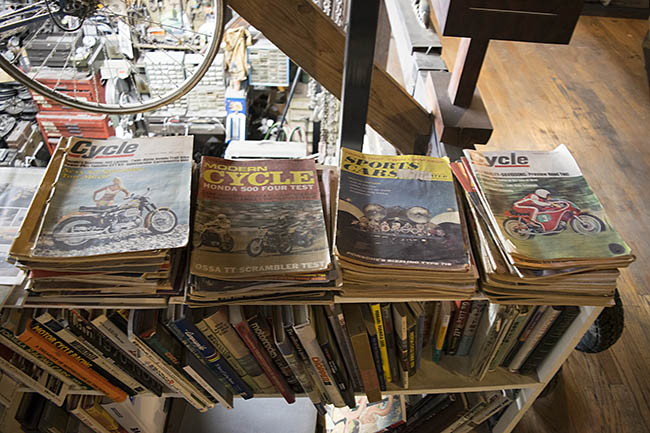
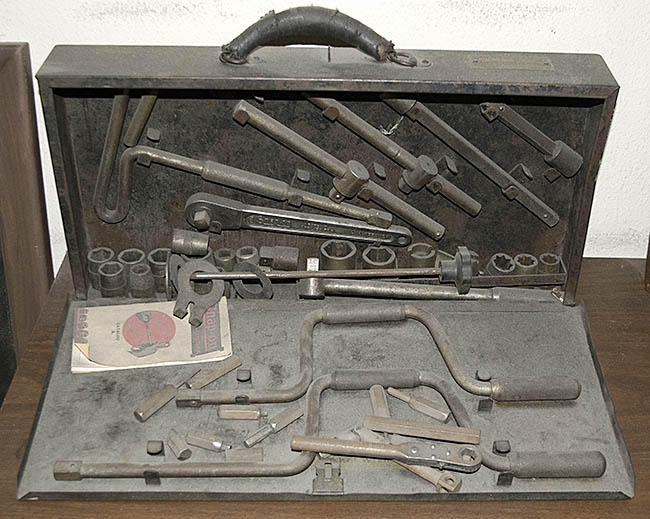
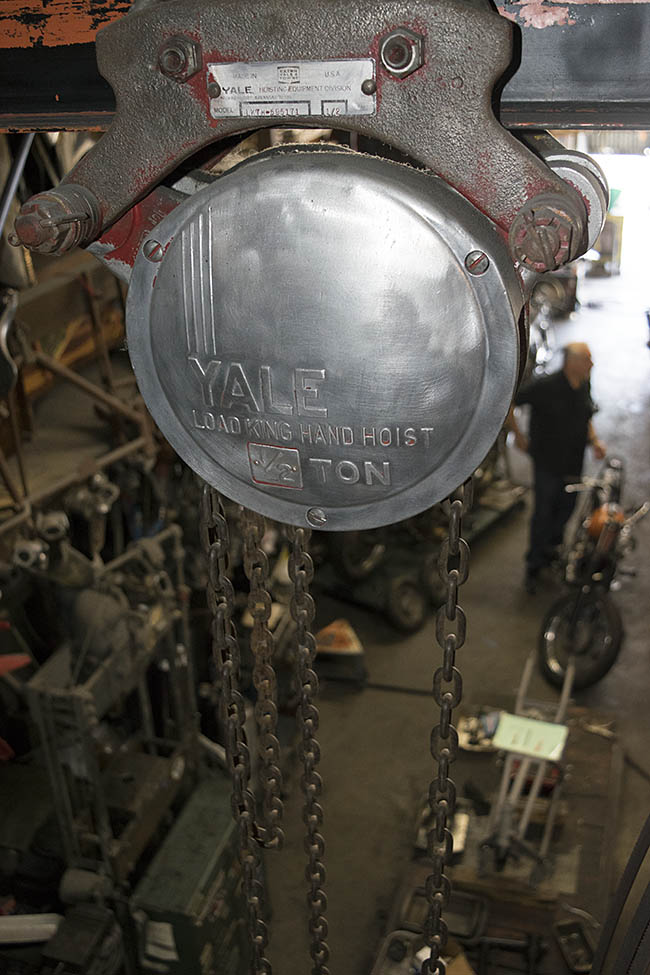
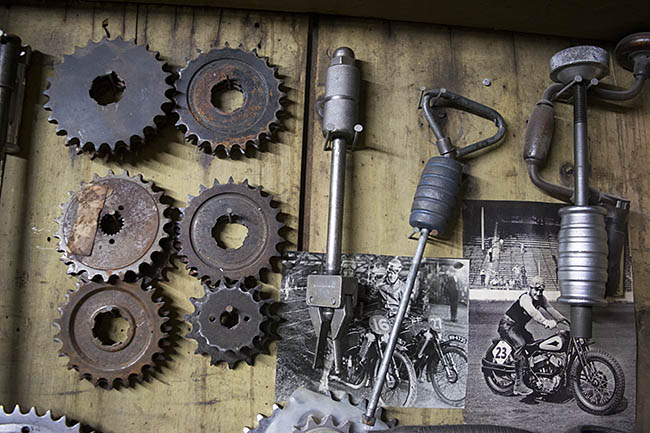

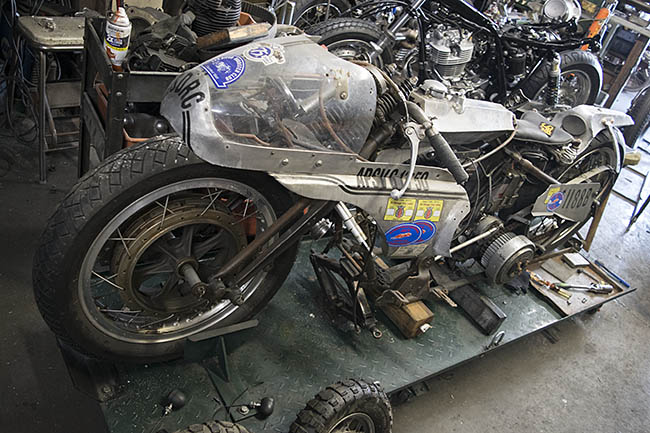
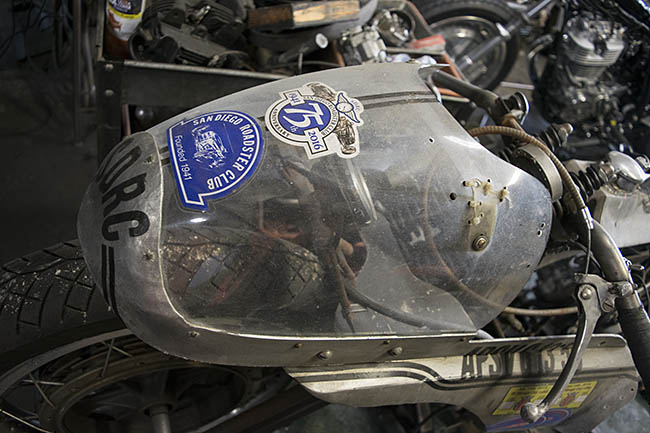
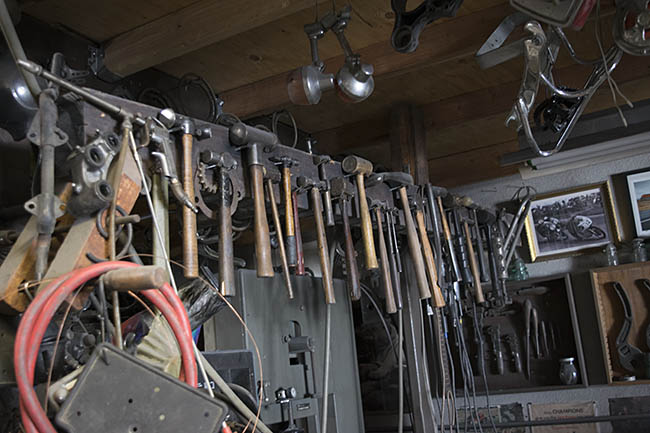








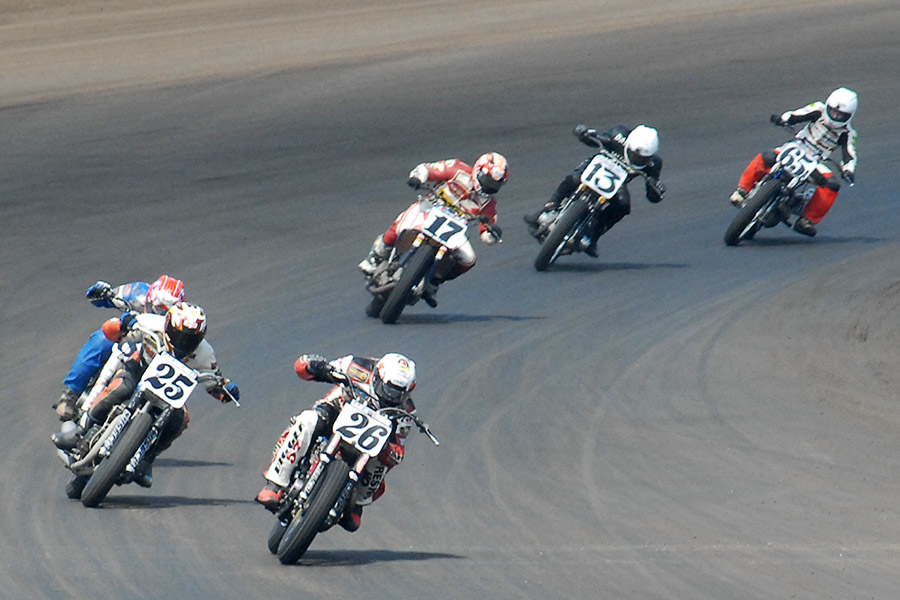
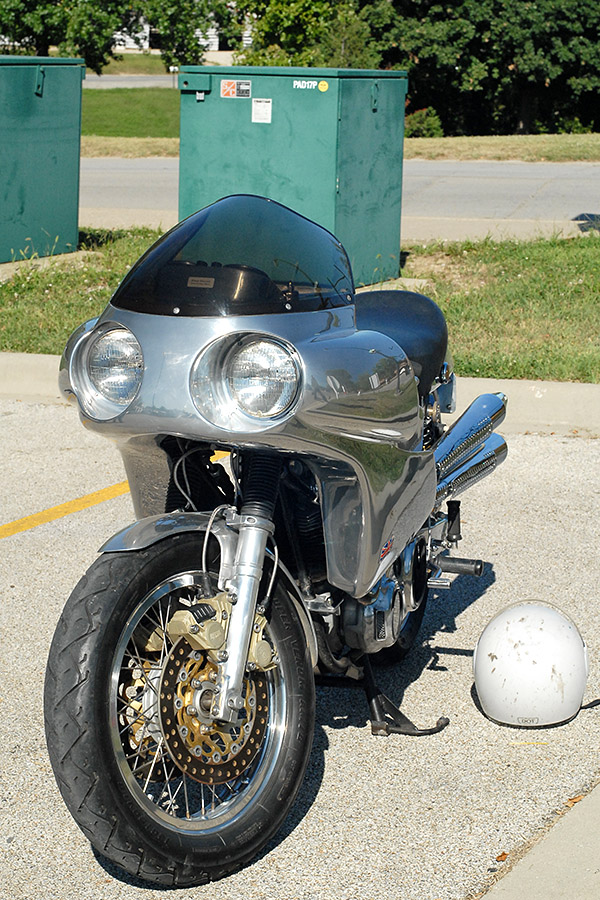
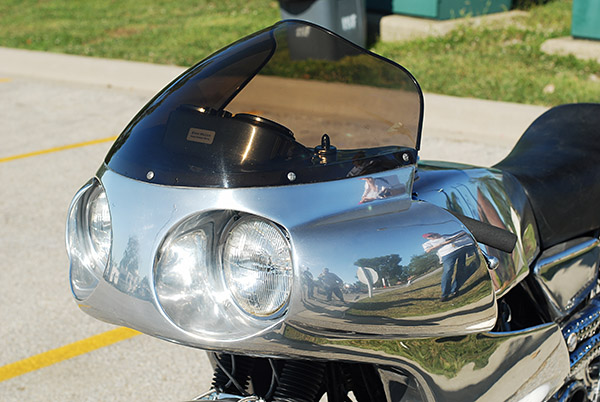

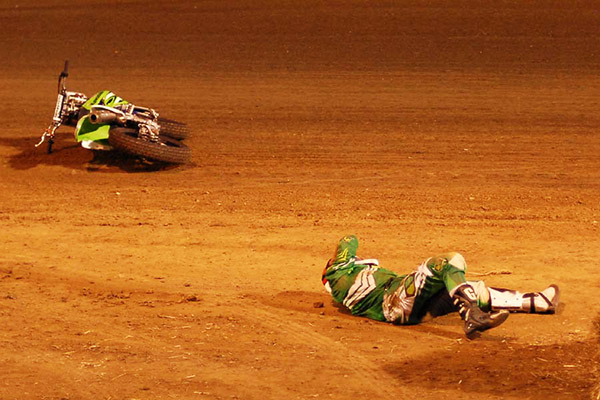
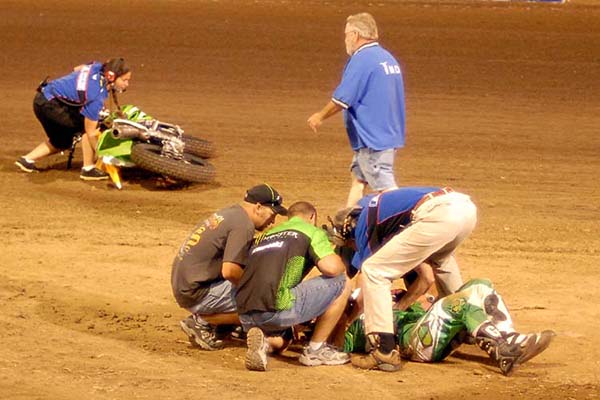
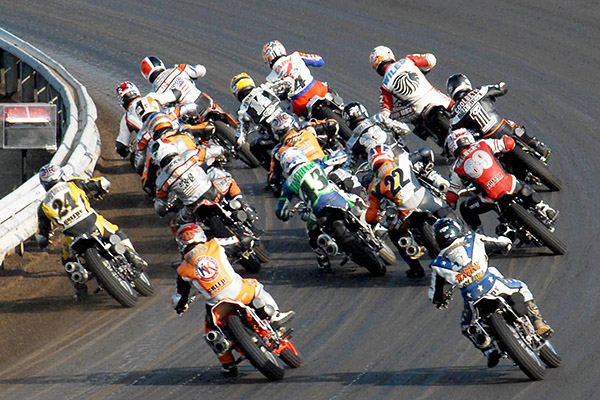
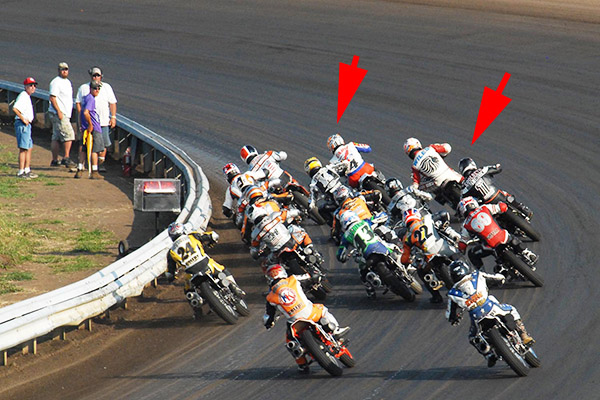

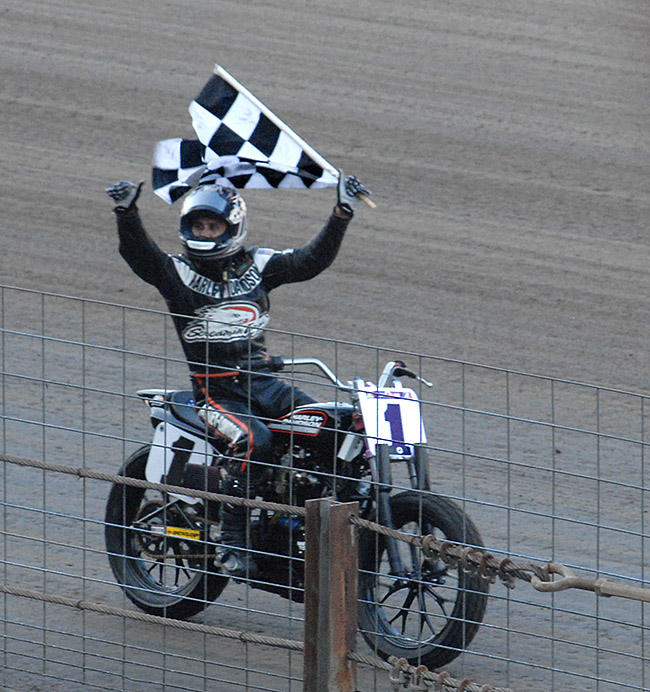
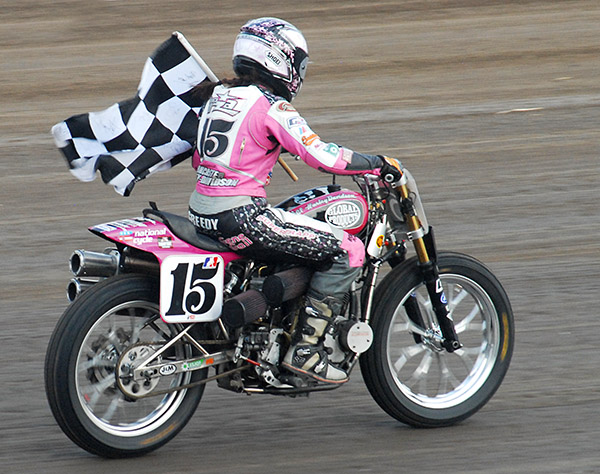
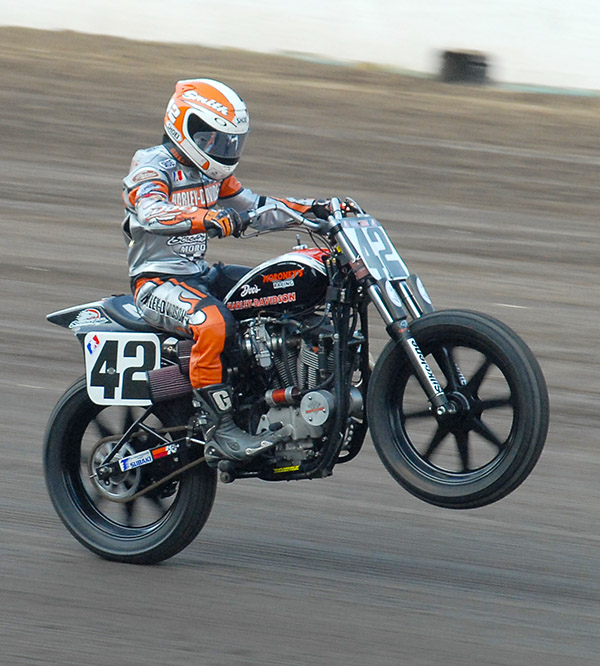
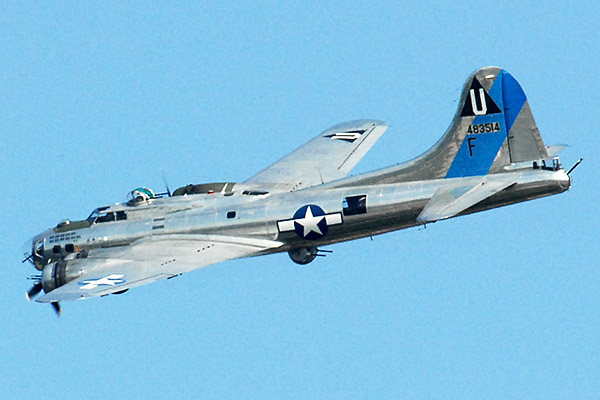
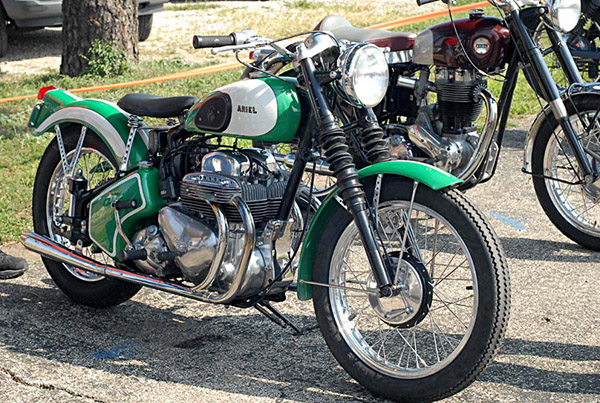
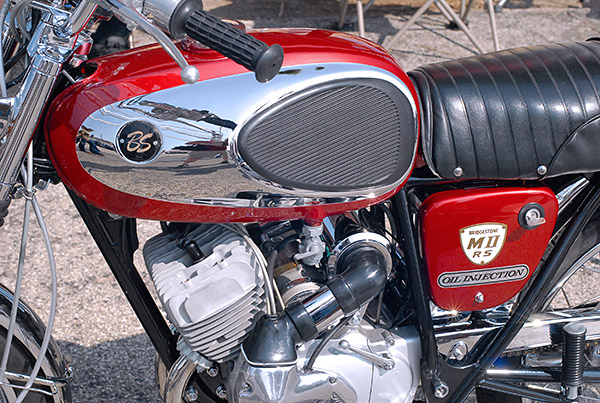
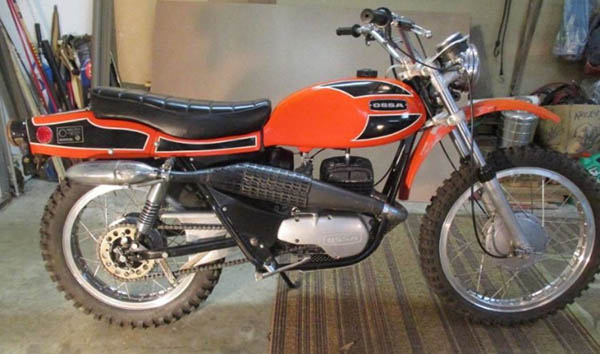 I must have been around 15 years old the first time I saw an Ossa Pioneer. It was at Haines City motocross track. Mike Mills’ mom was divorced and her boyfriend gave us a ride way out to Chrome Avenue in his boat tail Buick Riviera . What a car! The Riviera smelled great inside not only because it was new, but because the boyfriend wore cologne. This was the first time I had been around a grown man that used cologne. All the other adult men I had known up to that point smelled like dirty socks. I smell like dirty socks right now.
I must have been around 15 years old the first time I saw an Ossa Pioneer. It was at Haines City motocross track. Mike Mills’ mom was divorced and her boyfriend gave us a ride way out to Chrome Avenue in his boat tail Buick Riviera . What a car! The Riviera smelled great inside not only because it was new, but because the boyfriend wore cologne. This was the first time I had been around a grown man that used cologne. All the other adult men I had known up to that point smelled like dirty socks. I smell like dirty socks right now. Mostly Bultacos and Maicos were racing in Haines City back then but one guy had an Ossa Pioneer with the lights removed. The rider was good. He would get crossed up over the jumps and finished in the top 5 against real race bikes. I loved how the rear fender blended into the bike. That fiberglass rear section had a small storage area inside. One of the bike magazines of the era tossed a loose spark plug in the storage and went scrambling. The plug beat a hole in the rear fender and they had the nerve to bitch about it. Hell, I knew at 10 that you have to wrap stuff in rags on a motorcycle.
Mostly Bultacos and Maicos were racing in Haines City back then but one guy had an Ossa Pioneer with the lights removed. The rider was good. He would get crossed up over the jumps and finished in the top 5 against real race bikes. I loved how the rear fender blended into the bike. That fiberglass rear section had a small storage area inside. One of the bike magazines of the era tossed a loose spark plug in the storage and went scrambling. The plug beat a hole in the rear fender and they had the nerve to bitch about it. Hell, I knew at 10 that you have to wrap stuff in rags on a motorcycle. It rains most everyday in Florida and it started pouring. The races kept going for a while but finally had to be called because it was a deluge. You could hardly see to walk. There was no cover so we huddled in the leeward side of the ticket stand out by the entrance. It rained harder, the wind was howling. Wearing only shorts and T-shirts we were getting colder and colder. My lips were turning blue, man.
It rains most everyday in Florida and it started pouring. The races kept going for a while but finally had to be called because it was a deluge. You could hardly see to walk. There was no cover so we huddled in the leeward side of the ticket stand out by the entrance. It rained harder, the wind was howling. Wearing only shorts and T-shirts we were getting colder and colder. My lips were turning blue, man.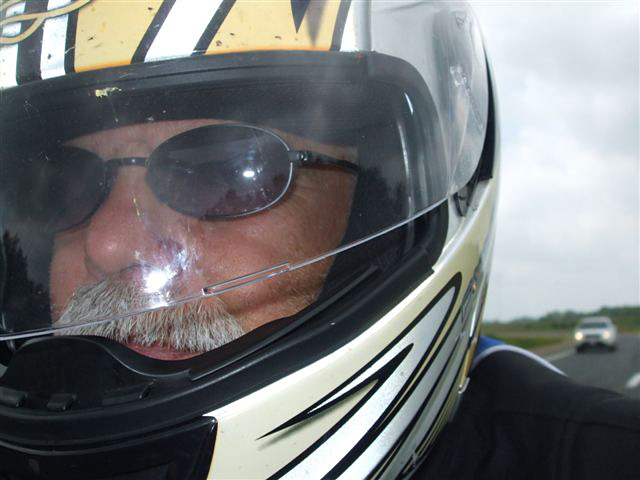
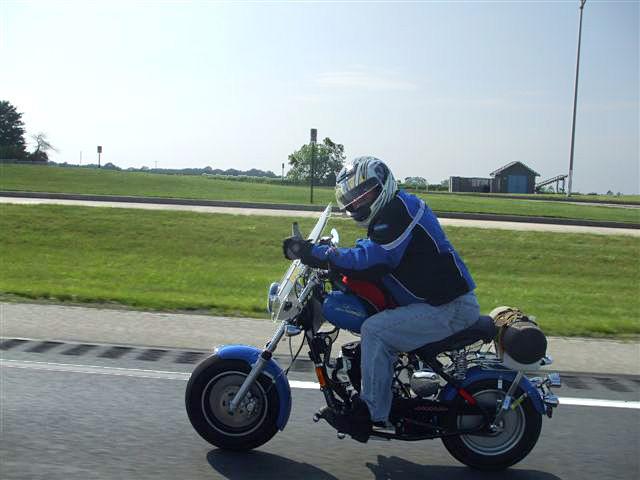
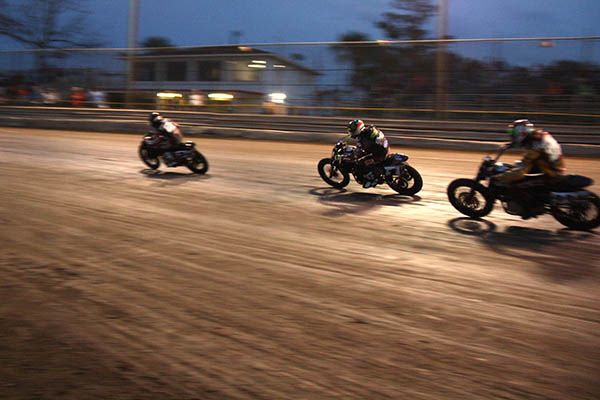 In San Diego I lived across the street from a Safeway food market. Man, I never ran out of anything. That Safeway is now a West Marine boat supply store. They got nothing to eat in the whole damn place. But back then, around 1980, it was a great food source.
In San Diego I lived across the street from a Safeway food market. Man, I never ran out of anything. That Safeway is now a West Marine boat supply store. They got nothing to eat in the whole damn place. But back then, around 1980, it was a great food source. Most all of the fun things we did as little kids were instigated by my Grandparents. Between raising four kids and working constantly to pay for the opportunity our parents were left spent, angry and not that into family-time trips. We did try it a few times but it seems like the trips always ended with someone crying, my parents arguing or a small child missing an arm. With only 16 limbs between us we had to be careful and husband our togetherness for fear of running out.
Most all of the fun things we did as little kids were instigated by my Grandparents. Between raising four kids and working constantly to pay for the opportunity our parents were left spent, angry and not that into family-time trips. We did try it a few times but it seems like the trips always ended with someone crying, my parents arguing or a small child missing an arm. With only 16 limbs between us we had to be careful and husband our togetherness for fear of running out. We always bought infield tickets. Camping at the Daytona Speedway was included with infield tickets so we immersed ourselves in the racing and never had to leave. Gramps had a late 1960’s Ford window van with a 6-cylinder, 3-on-the-tree drivetrain. The van was fitted out inside with a bed and had a table that pivoted off the forward-most side door. To give us a better view of the racing Gramps built a roof rack out of 1” tubing. The rack had a ¾” plywood floor and was accessed via a removable ladder that hung from the rack over the right rear bumper.
We always bought infield tickets. Camping at the Daytona Speedway was included with infield tickets so we immersed ourselves in the racing and never had to leave. Gramps had a late 1960’s Ford window van with a 6-cylinder, 3-on-the-tree drivetrain. The van was fitted out inside with a bed and had a table that pivoted off the forward-most side door. To give us a better view of the racing Gramps built a roof rack out of 1” tubing. The rack had a ¾” plywood floor and was accessed via a removable ladder that hung from the rack over the right rear bumper. When you would climb the ladder to the upper deck your hands would pick up silver paint. If you sat on the deck your pants would turn silver. If you rubbed your nose like little kids do your nose would turn silver. It was like Gramps painted the deck with Never-Seez. After a full day of racing we looked like little wads of Reynolds Wrap.
When you would climb the ladder to the upper deck your hands would pick up silver paint. If you sat on the deck your pants would turn silver. If you rubbed your nose like little kids do your nose would turn silver. It was like Gramps painted the deck with Never-Seez. After a full day of racing we looked like little wads of Reynolds Wrap. Our camp stove was a two-burner alcohol fueled unit that, incomprehensibly, used a glass jar to contain the alcohol. Even to my 10 year-old eyes the thing looked like a ticking time bomb so I kept my distance while gramps lit matches and cussed at the stove.
Our camp stove was a two-burner alcohol fueled unit that, incomprehensibly, used a glass jar to contain the alcohol. Even to my 10 year-old eyes the thing looked like a ticking time bomb so I kept my distance while gramps lit matches and cussed at the stove.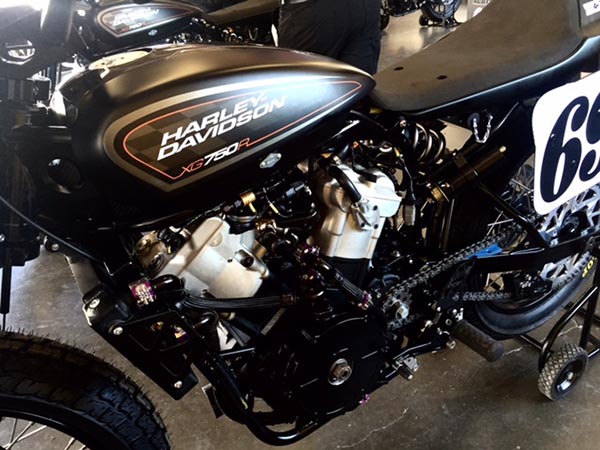 The Bike Week flat track has another, even stranger configuration this year. Before I get onto that a brief history is in order. The Bike Week AMA points-paying races were held at Memorial Stadium on 11th Street for many, many years. It’s a good venue with lots of seating, parking and being a real stadium it’s perfect for flat track.
The Bike Week flat track has another, even stranger configuration this year. Before I get onto that a brief history is in order. The Bike Week AMA points-paying races were held at Memorial Stadium on 11th Street for many, many years. It’s a good venue with lots of seating, parking and being a real stadium it’s perfect for flat track.